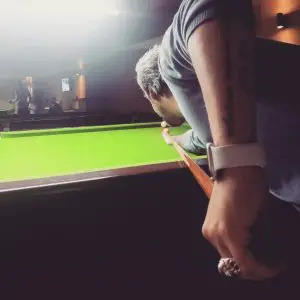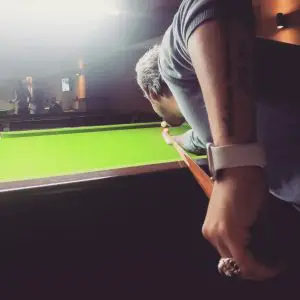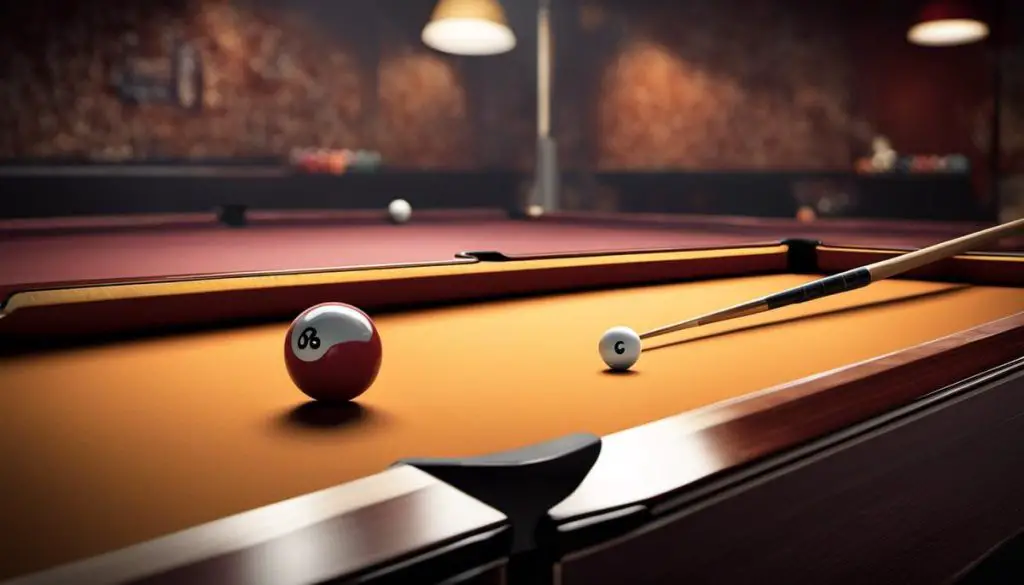Introduction: The Evolution of Billiards and Snooker
Welcome to mypoolcue.com, your go-to source for all things snooker. In this post, we delve into the captivating history of billiards and snooker, tracing their origins and evolution over the years. Let’s embark on this journey together.
-
Overview of the History of Billiards and Snooker
The origins of billiards and snooker can be traced back to the 15th century. Initially, it was a lawn game similar to croquet, played by the nobles of the time. The game eventually moved indoors, and the green cloth on the table was meant to represent the grass of the lawn games.
Billiards evolved into snooker in the late 19th century. The term ‘snooker’ was a slang term used in the British army, referring to first-year cadets or inexperienced personnel. The name was humorously applied to the game because of the players’ lack of skill.
Over the years, both games have evolved, with changes in rules, equipment, and playing styles. Today, they are enjoyed by millions of fans worldwide, both as a leisure activity and a professional sport. For more detailed information, you can visit the Wikipedia page on the history of billiards.
-
The Birth of Snooker: A Brief Introduction
Snooker was born in the latter half of the 19th century in the British army stationed in India. The game was invented by Sir Neville Chamberlain, who added colored balls to the traditional billiards game to increase its complexity and appeal.
The first official set of rules was established in 1882, and the game quickly gained popularity among the British officers. It was not until the 20th century, however, that snooker became a professional sport. The first World Snooker Championship was held in 1927, marking a significant milestone in the game’s history.
Since then, snooker has grown exponentially, with players from all over the world participating in various tournaments. The game has also seen several rule changes and refinements over the years, making it the exciting and strategic game we know today. For more information, you can visit the Wikipedia page on the history of snooker.
The Early Days: Snooker Rules History
Snooker is a game that has stood the test of time, captivating players and audiences alike with its unique blend of strategy, skill, and suspense. But have you ever wondered how the rules of this beloved game came to be? Let’s dive into the origins of snooker rules and the key figures who played a pivotal role in their early development.
- Origins of snooker rules
- Key figures in the early development of snooker rules
The game of snooker was born in the latter half of the 19th century, specifically in the British Army’s officer’s mess in Jubbulpore, India. The rules were initially quite simple, designed to be an amalgamation of billiards and pyramid pool. The term ‘snooker’ was coined by Colonel Sir Neville Chamberlain, who used it to refer to inexperienced or first-year military cadets. The rules began to evolve as the game gained popularity, with the first official set of rules being published in 1882.
Colonel Sir Neville Chamberlain is often credited as the father of snooker, having played a significant role in the game’s inception and the establishment of its initial rules. Another key figure was Joe Davis, a professional English billiards and snooker player. Davis saw the potential in snooker and played a crucial role in its promotion. He was instrumental in the formation of the Professional Billiards Players’ Association, which later became the World Professional Billiards and Snooker Association (WPBSA). The WPBSA was responsible for the further development and standardization of snooker rules.
Understanding the history of snooker rules helps us appreciate the game’s evolution and the efforts of those who helped shape it into the sport we love today. Stay tuned as we delve deeper into the major changes in snooker rules and their impact on the game’s evolution in our upcoming sections.
Major Changes in Snooker Rules: A Timeline
Snooker, like any other sport, has seen its rules evolve over time. This timeline provides a glimpse into the major changes in snooker rules from its inception to the present day.
- 19th Century: The inception of snooker and its initial rulesSnooker was invented in the late 19th century by British Army officers stationed in India. The initial rules were quite simple. The game was played on a billiard table with 15 red balls and six colored balls. The objective was to score more points than your opponent by potting the balls in a specific order. [source]
- Early 20th Century: The first major changesThe first major changes to the rules of snooker came in the early 20th century. The number of red balls was increased to 21, and a new rule was introduced that allowed players to force their opponents to re-shoot a shot if they committed a foul. [source]
- Mid 20th Century: The era of transformationIn the mid 20th century, snooker underwent a period of transformation. The number of red balls was reduced back to 15, and several new rules were introduced to make the game more challenging and exciting. These included the introduction of the “free ball” rule and the requirement for players to nominate their intended ball before each shot. [source]
- Late 20th Century: Modernization of snooker rulesThe late 20th century saw further modernization of snooker rules. The “miss” rule was introduced, which allows the referee to call a “miss” if they believe a player has not made a genuine attempt to hit a ball. This rule has added a new level of strategy to the game. [source]
- 21st Century: The current state of snooker rulesToday, the rules of snooker are governed by the World Professional Billiards and Snooker Association. The rules have remained largely unchanged since the late 20th century, with the exception of some minor tweaks to improve the flow of the game. [source]
In conclusion, the rules of snooker have evolved significantly since the game’s inception in the 19th century. These changes have helped to make the game more exciting and challenging, ensuring its continued popularity among fans around the world.
Case Study: Snooker Game Evolution
Snooker, a game loved by many, has evolved significantly over the years. This evolution has been influenced by various factors, including changes in the rules. Let’s delve into how these rule changes have impacted the game.
Impact of Rule Changes on the Game
Rule changes in snooker have had a profound impact on the game. They have influenced the game’s strategy and affected players’ techniques and styles. Let’s explore these impacts in detail.
- How changes in snooker rules influenced the game’s strategy
- Impact on players’ techniques and styles
Changes in snooker rules have significantly influenced the game’s strategy. For instance, the introduction of the ‘free ball’ rule, which allows a player to nominate any ball as the ball ‘on’ after a foul, has added a new layer of strategy to the game. Players now have to think more carefully about their shots, considering the potential benefits and risks of a free ball. This rule change has made the game more dynamic and exciting. [source]
Rule changes have also affected players’ techniques and styles. For example, the rule change that increased the value of the black ball from six to seven points led to a shift in players’ strategies. Players started to focus more on potting the black ball, which required them to improve their long potting and positional play skills. This rule change has resulted in a more skillful and entertaining game. [source]
In conclusion, rule changes have played a crucial role in the evolution of snooker. They have influenced the game’s strategy and affected players’ techniques and styles, making the game more exciting and challenging. As snooker continues to evolve, we can expect more rule changes that will further shape the game.
Key Takeaways: Snooker Rules Transformation
The game of snooker, like any other sport, has seen significant changes in its rules over the years. These transformations have been instrumental in shaping the game as we know it today. Let’s delve into the key takeaways from the evolution of snooker rules.
- Understanding the reasons behind the changes in snooker rules
- How the evolution of snooker rules reflects the game’s growth
Snooker rules have been modified for various reasons, including enhancing player safety, promoting fairness, and improving the game’s overall appeal. For instance, the introduction of the ‘miss’ rule, which penalizes players for not hitting the ball on, was implemented to prevent intentional fouls. Similarly, the ‘free ball’ rule was introduced to ensure that a player is not disadvantaged if their opponent commits a foul and leaves them snookered. These changes have been crucial in maintaining the integrity of the game.
The evolution of snooker rules is a testament to the game’s growth and increasing popularity. As the game expanded globally, the need for standardized rules became evident. The World Professional Billiards and Snooker Association (WPBSA) was formed in 1968 to govern the game and ensure uniformity in rules. Over the years, the WPBSA has made several changes to the rules, reflecting the game’s evolving dynamics and the need to keep it engaging for both players and spectators. For example, the introduction of the ‘three consecutive misses and out’ rule has added an extra layer of strategy to the game, making it more exciting to watch.
In conclusion, the transformation of snooker rules has played a pivotal role in the game’s development. By understanding the reasons behind these changes and how they reflect the game’s growth, we can appreciate snooker’s rich history and anticipate its future trajectory.
Looking Ahead: The Future of Snooker Rules
As we delve into the future of snooker, it’s important to consider the potential changes that could be on the horizon. Snooker, like any other sport, is not immune to evolution. The rules that govern the game today may not be the same ones that guide it tomorrow. Let’s explore some of the potential future changes in snooker rules and how these changes could affect the game.
- Potential future changes in snooker rules
- How these changes could affect the game
While it’s impossible to predict with certainty, there are several areas where we could see changes in snooker rules. One of these is the introduction of technology to assist referees in making decisions. Just as VAR has revolutionized football, similar technology could be used in snooker to ensure fair play and accuracy. Another potential change could be the alteration of scoring rules to make the game more exciting and competitive. For instance, bonus points could be awarded for difficult shots or for achieving certain milestones during a match. Wikipedia provides a comprehensive overview of the current rules, which could serve as a basis for future changes.
Changes in rules can have a profound impact on the game. The introduction of technology could make the game fairer by eliminating human error in decision-making. However, it could also slow down the game and disrupt its flow. Altering scoring rules could make matches more exciting and unpredictable, potentially attracting a larger audience. However, it could also alienate traditional fans who appreciate the game’s current format and strategy. Ultimately, any changes would need to strike a balance between innovation and respect for the game’s rich history.
In conclusion, the future of snooker rules is uncertain, but it’s clear that the game will continue to evolve. As fans, players, and enthusiasts, it’s important to stay informed and engaged in these discussions to ensure the game’s integrity and enjoyment for generations to come.
Conclusion: Snooker Rules Over the Years
As we reach the end of our journey through the captivating history of snooker rules, it’s time to reflect on the key points we’ve covered and share some final thoughts.
- Recap of the fascinating evolution of snooker rules
- Final thoughts on the development of snooker rules
From its humble beginnings in the 19th century, snooker has evolved into a global sport with a rich and complex set of rules. The game we know and love today has been shaped by numerous changes over the years, each one designed to improve the sport and keep it exciting for players and fans alike. We’ve seen how the introduction of the “miss” rule, the evolution of the scoring system, and the development of the “free ball” rule have all played a part in shaping the game.
The evolution of snooker rules is a testament to the sport’s adaptability and its commitment to maintaining a high level of competition. As the game continues to grow in popularity around the world, we can expect to see further changes and refinements to the rules. But one thing is certain: the spirit of snooker, with its emphasis on skill, strategy, and sportsmanship, will always remain at the heart of the game.
Thank you for joining us on this journey through the history of snooker rules. We hope you’ve found it as fascinating as we have. Remember, the next time you pick up a cue and step up to the table, you’re not just playing a game – you’re participating in a sport with a rich and storied history.
Keep practicing, keep learning, and most importantly, keep enjoying the wonderful game of snooker!








